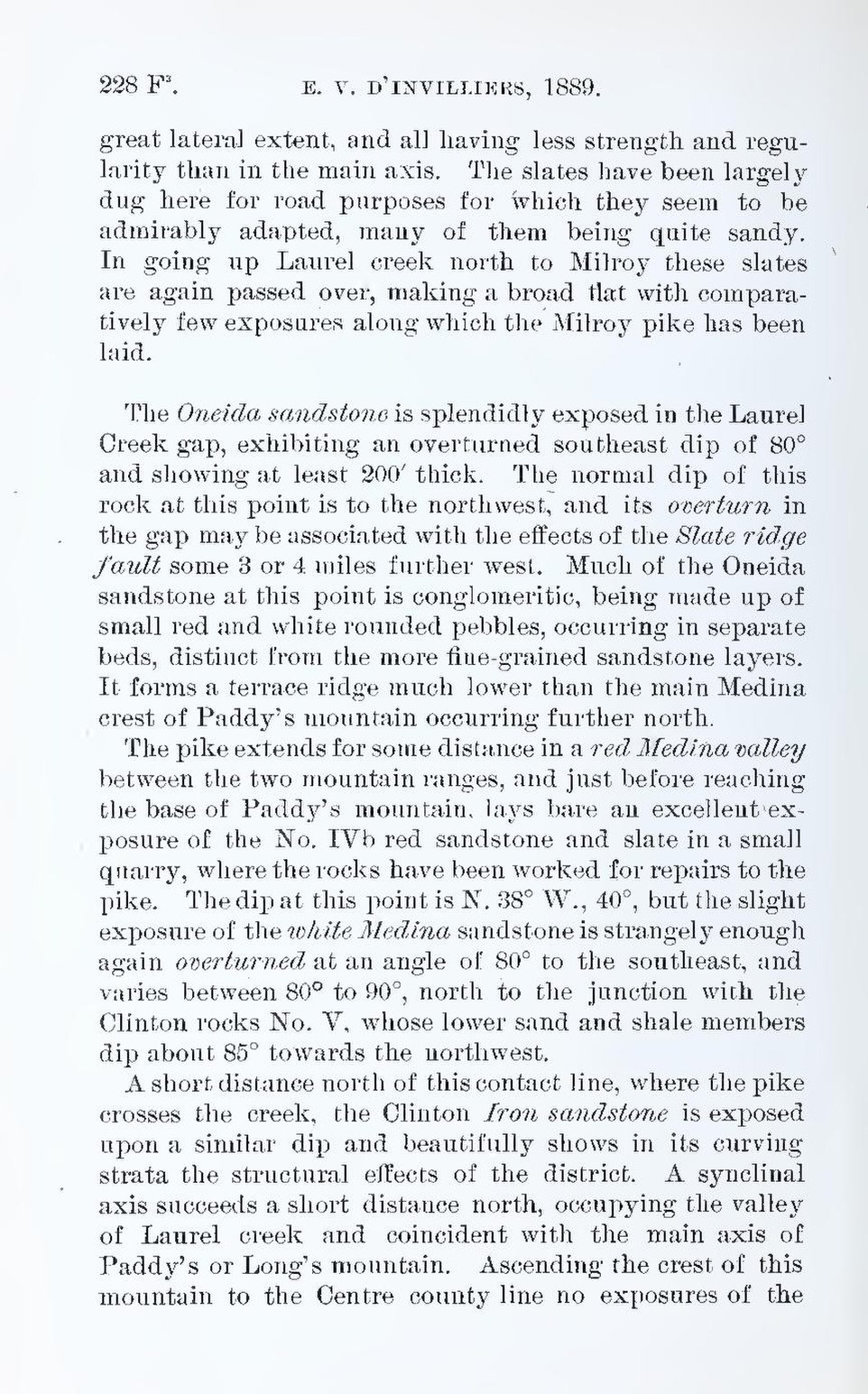great lateral extent, and all having less strength and regularity than in the main axis. The slates have been largely dug here for road purposes for which they seem to be admirably adapted, many of them being quite sandy. In going up Laurel creek north to Milroy these slates are again passed over, making a broad flat with comparatively few exposures along which the Milroy pike has been laid.
The Oneida sandstone is splendidly exposed in the Laurel Creek gap, exhibiting an overturned southeast dip of 80° and showing at least 200′ thick. The normal dip of this rock at this point is to the northwest, and its overturn in the gap may be associated with the effects of the Slate ridge fault some 3 or 4 miles further west. Much of the Oneida sandstone at this point is conglomeritic, being made up of small red and white rounded pebbles, occurring in separate beds, distinct from the more fine-grained sandstone layers. It forms a terrace ridge much lower than the main Medina crest of Paddy’s mountain occurring further north.
The pike extends for some distance in a red Medina valley between the two mountain ranges, and just before reaching the base of Paddy’s mountain, lays bare an excellent exposure of the No. IVb red sandstone and slate in a small quarry, where the rocks have been worked for repairs to the pike. The dip at this point is N. 38° W., 40°, but the slight exposure of the white Medina sandstone is strangely enough again overturned at an angle of 80° to the southeast, and varies between 80° to 90°, north to the junction with the Clinton rocks No. V, whose lower sand and shale members dip about 85° towards the northwest.
A short distance north of this contact line, where the pike crosses the creek, the Clinton Iron sandstone is exposed upon a similar dip and beautifully shows in its curving strata the structural effects of the district. A synclinal axis succeeds a short distance north, occupying the valley of Laurel creek and coincident with the main axis of Paddy’s or Long’s mountain, Ascending the crest of this mountain to the Centre county line no exposures of the
